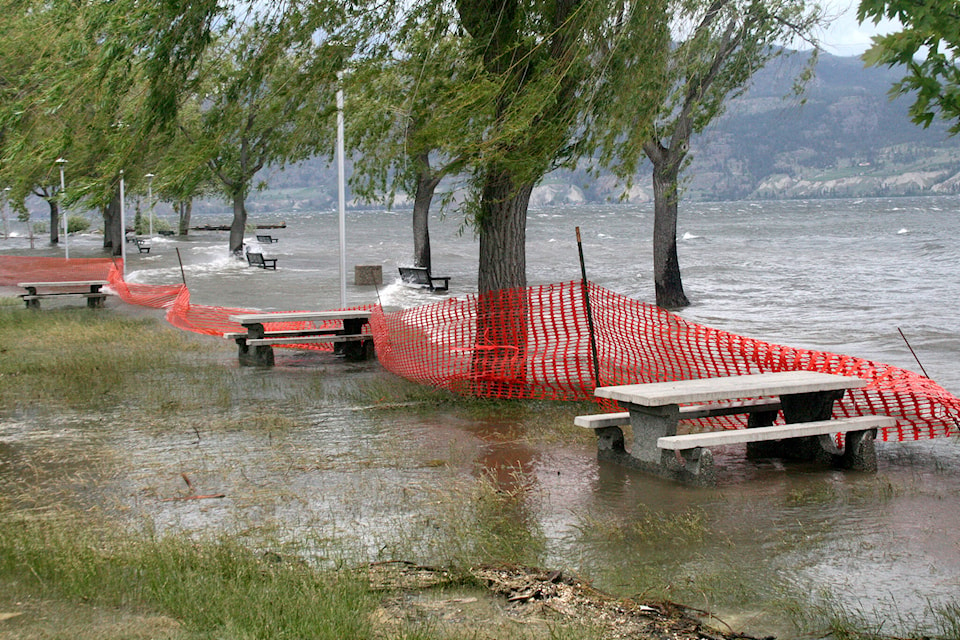After a brutal year of wildfires, a heat dome event, extreme flooding and record-setting temperatures, it is time once again to prepare for some worst-case scenarios.
At present, British Columbia’s snowpack is at 113 per cent of normal provincewide, raising concerns about the possibility of spring flooding.
READ ALSO:
READ ALSO:
Even in the Okanagan, where the snowpack is well below normal levels, flooding is still a possibility, especially if the cool weather seen in April and early May suddenly shifts to above normal temperatures and rapid snowmelt.
Spring flooding has happened before, and swollen creeks and high lake levels were observed in 2017 and 2018. Some communities are still repairing the damages done as a result of these two flood seasons.
Other extreme weather events have been happening with increased frequency in recent years.
The wildfire season of 2021 was the third most destructive on record in British Columbia. If this had been the only bad fire season, it would have been significant. However, the three worst wildfire seasons on record happened in a five-year period, with immense destruction recorded in 2017, 2018 and 2021.
In addition, the heat dome of late June 2021 shattered longstanding temperature records around the province and beyond. Much of the village of Lytton burned during a fire on one of the hottest days ever recorded in Canada.
Then, in November, extreme flooding ravaged communities including Princeton, Merritt and Abbotsford. The affected communities are continuing to rebuild and repair the damages.
While nobody wants a repeat of the extreme conditions of recent years, weather anomalies are occurring much more frequently now than in past years.
It is essential to have plans in place to cope with future extreme events when they occur.
– Black Press



